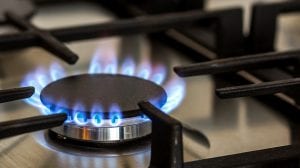Australia has neither the skilled workers nor the training capacity to achieve its ambitious renewable hydrogen plans, a new report has found.
Renewable hydrogen is a critical plank of both state and federal government ambitions to be carbon neutral by 2050 and the now-legislated 43% emission reduction target. The current almost complete lack of appropriate skills is a threat to those goals.
Australia is expected to create some 7,600 domestic hydrogen-related jobs by 2050, notes the ‘Hydrogen Skills Roadmap‘ from Swinburne University and the Victoria Hydrogen Hub.
Right now there is just one approved vocational hydrogen training course – for gas workers – available in Australia, which was pushed through with some urgency to support the 20 large-scale demonstration and pilot hydrogen projects underway.
All other trades are waiting on the delivery of the National Hydrogen Skills and Training Analysis Project, a document that has so far blown through at least two deadlines in May and June, as the federal government waits to see what new skills need to be taught.
The roadmap found that the most urgently affected jobs of the future are gas fitters, plumbers, truck and bus drivers, and mechanics.
But the workers most urgently in demand today are researchers who can spearhead projects into cheaper electrolysers, storage systems, and engines and processes that can use the fuel.

Although a fully fledged renewable hydrogen industry is not expected to emerge until 2030, there is enough activity already underway in Australia to justify building out new curricula and training courses from primary school through to vocational trades, says report author Kerrin Pyror.
Projects such as the Gladstone and Tonsley gas hubs in Queensland and South Australia which are already blending 5-10 per cent hydrogen into local gas networks, and the Western Sydney Green Gas Project which began in 2021 to supply hydrogen to 250 homes, require plumbers and gas fitters.
Heavy vehicle mechanics will need to upskill soon as states such as Victoria move some buses and heavy transport vehicles to hydrogen fuel.
“The urgency is reliant on the emergence of hydrogen along the supply chain. In the roadmap we talk about if the costs of producing wind and solar energy come down then the likelihood of hydrogen use and production and so forth will start to increase as well,” Pryor says.
She says currently people are leveraging their existing knowledge, but hydrogen “is a different beast”.
“We need a lot more business and government investment into production because we can create skills, but we need the hydrogen there.”
Getting to the right price
For the next range of hydrogen-related trades jobs to emerge the report assumes a hydrogen price of $3.50 by 2026, which is the minimum benchmark to make the first stage of bus transport viable
To meet Australia’s newly-legislated emissions target of a 43 per cent reduction below 2005 levels by 2030, that hydrogen must be green – or made using purely renewable energy.
Currently, green hydrogen prices are probably closer to $5.50-$8, according to the Australian Energy Market Commission, although it’s difficult to tell given how little is being produced so far.
CSIRO is forecasting that by 2040, gas-produced hydrogen or blue hydrogen will be more expensive to make than that produced by electrolysers, but this is predicated on new technologies being invented and commercialised between now and then.

Urgent transitions
At a $3.50/kg price, public transport is the first viable commercialised use of hydrogen, according to Pryor’s report.
Victoria has banned petrol and diesel buses from 2026 and is co-investing $20 million with NSW to built the Hume Hydrogen Highway, a network of four refuelling stations along the route — a proposal first floated in 2014 by Hyundai — to be ready in the same year.
But these vehicles work with higher voltage than electric versions and use gas stored under high pressure, which will require mechanics and electricians to retrain to understand the intersection between hydrogen gas and electricity, as well as to safeguard their jobs from redundancy as diesel vehicles are phased out.
New knowledge is needed more urgently for tradies working with hydrogen production and storage where activity is already happening, such as ammonia.
Hydrogen safety, emergency response. Installing appliances and understanding how a fuel cell works are practical skills needed now, says Victoria Hydrogen Hub chair Claire Johnson.
“There is a real need for Victoria to step up and evaluate its training offerings in hydrogen if we are to secure that position as market leader in this space,” she says.
“The [Victoria Hydrogen Hub-Swinburne] plan is to finalise [some] micro-credentials over the coming months, and then to start rolling those out with Victorian industry. We’re working to skill up Victoria businesses as a priority. The next stage is curriculums in universities and schools.”









